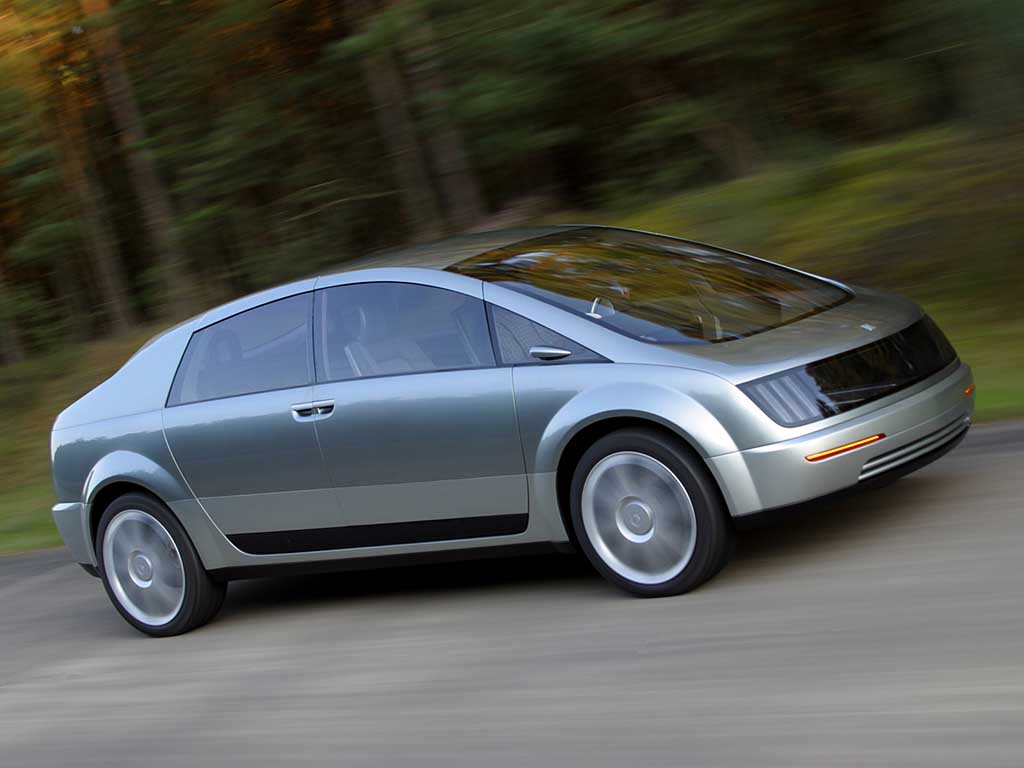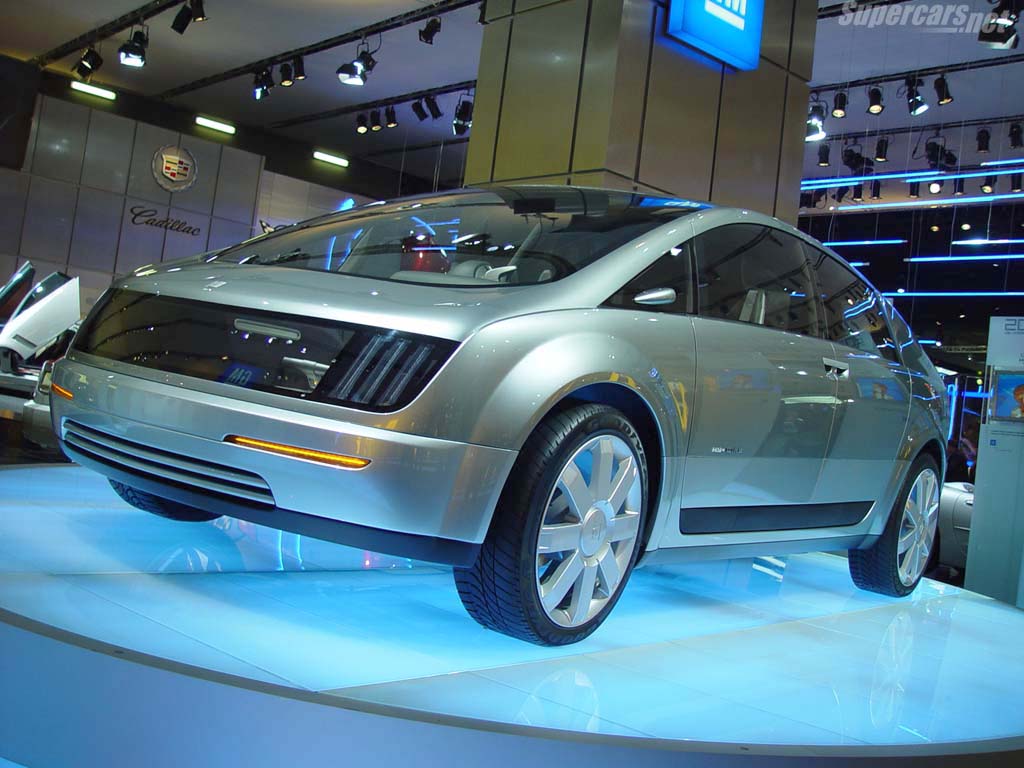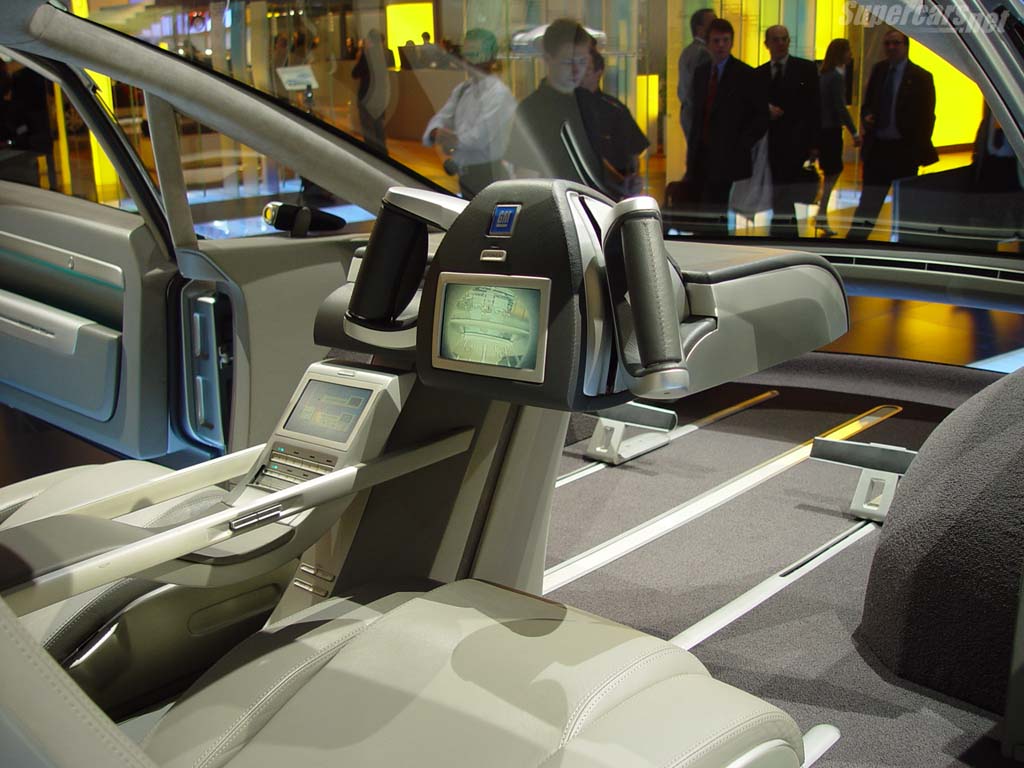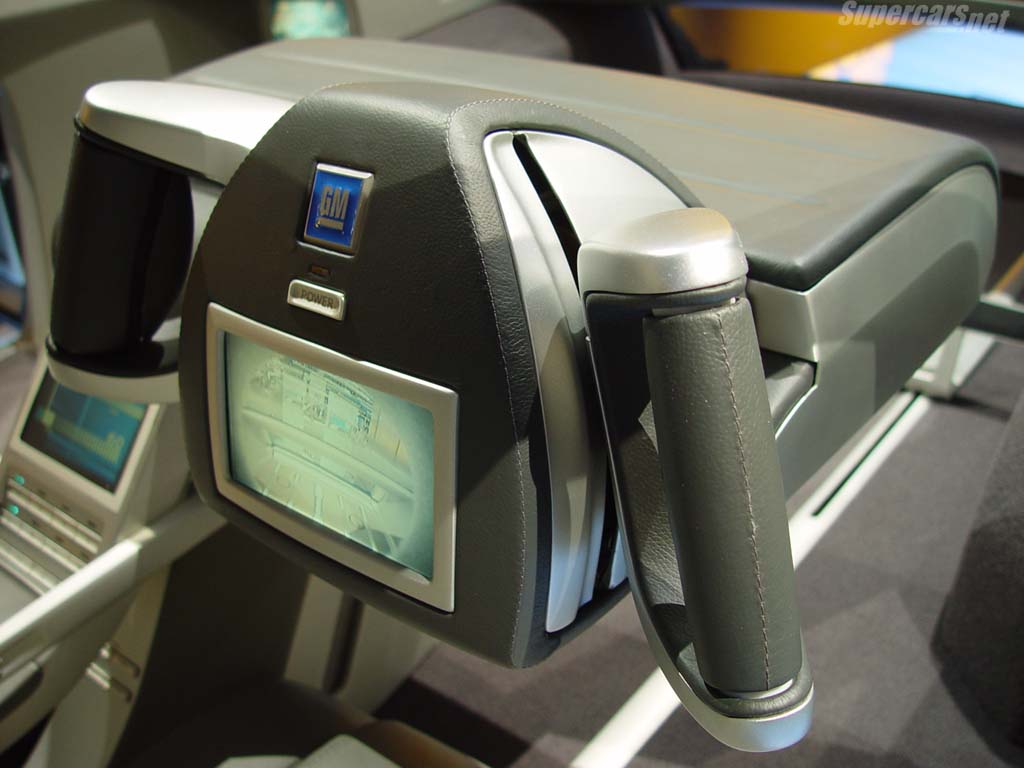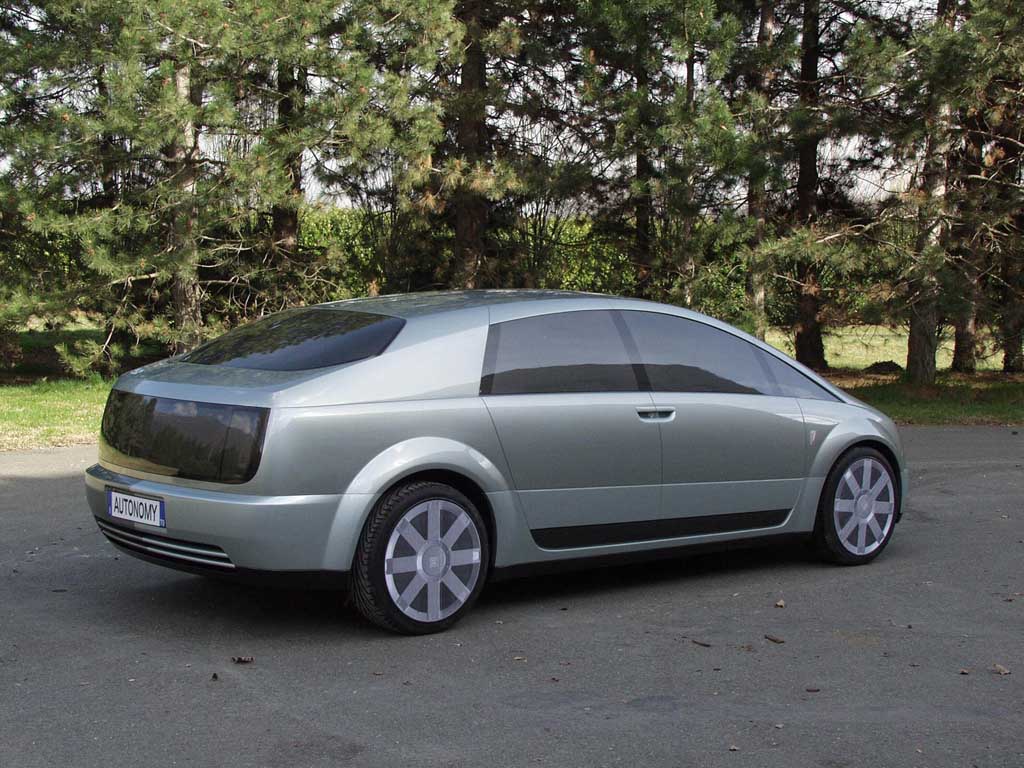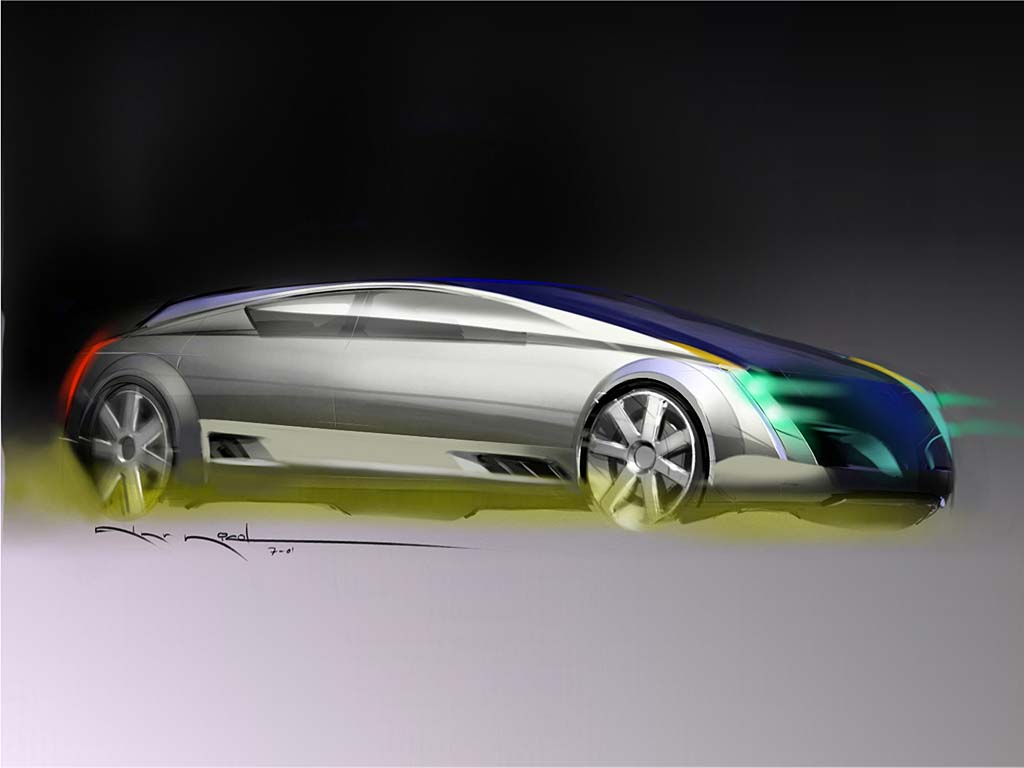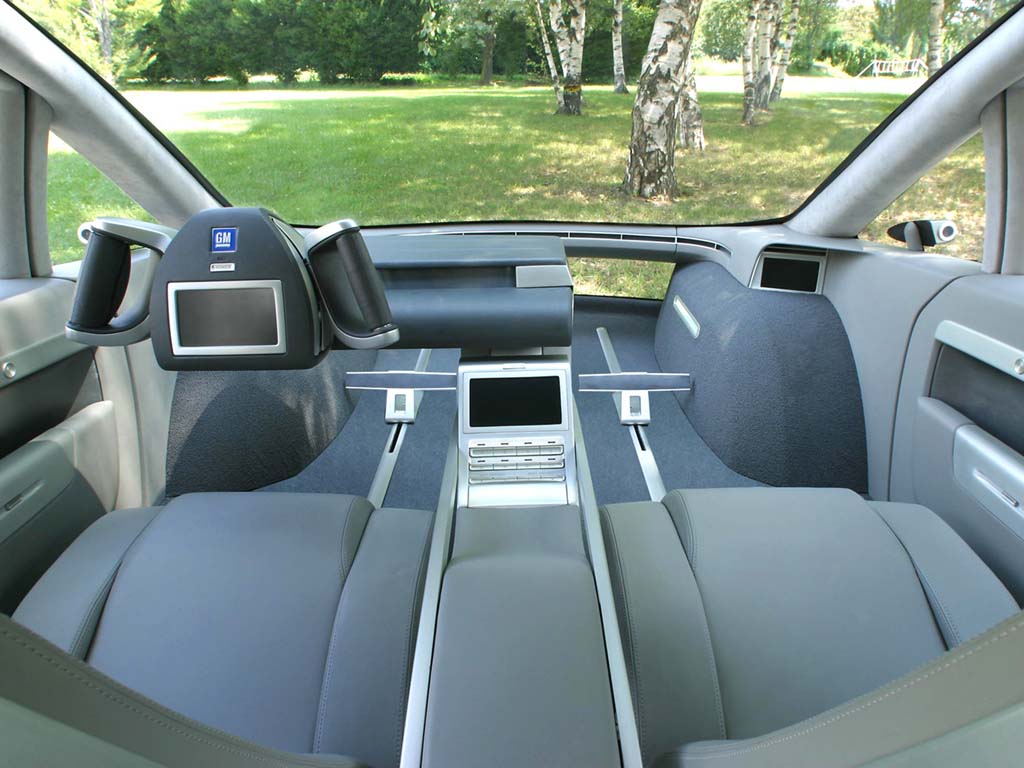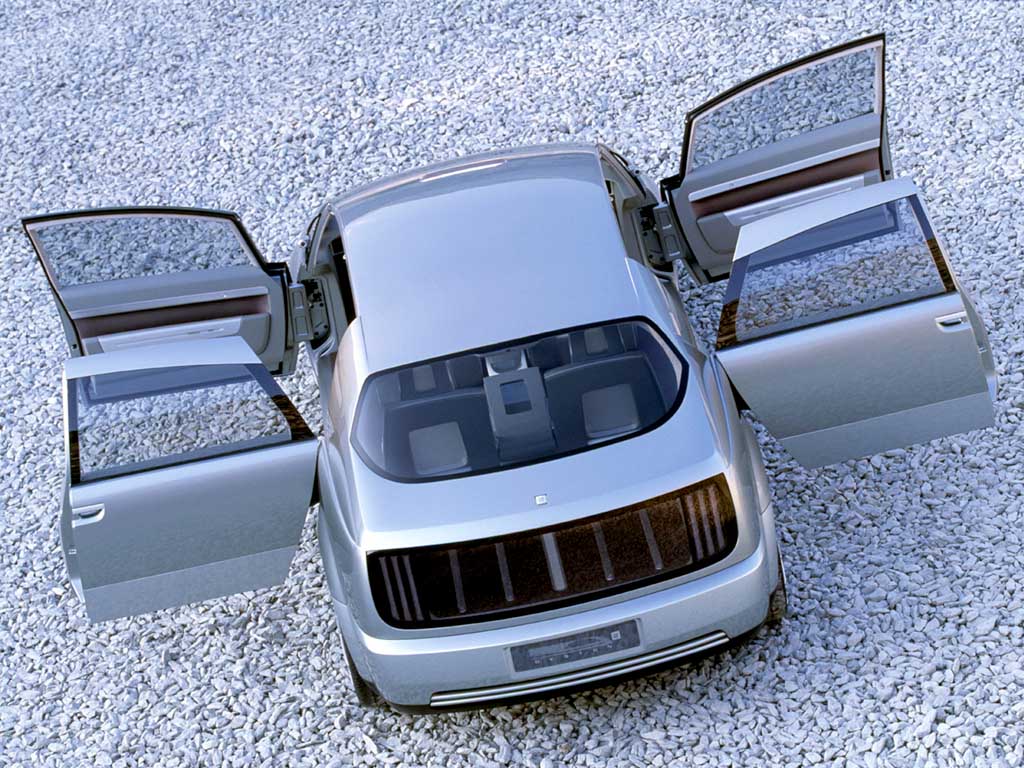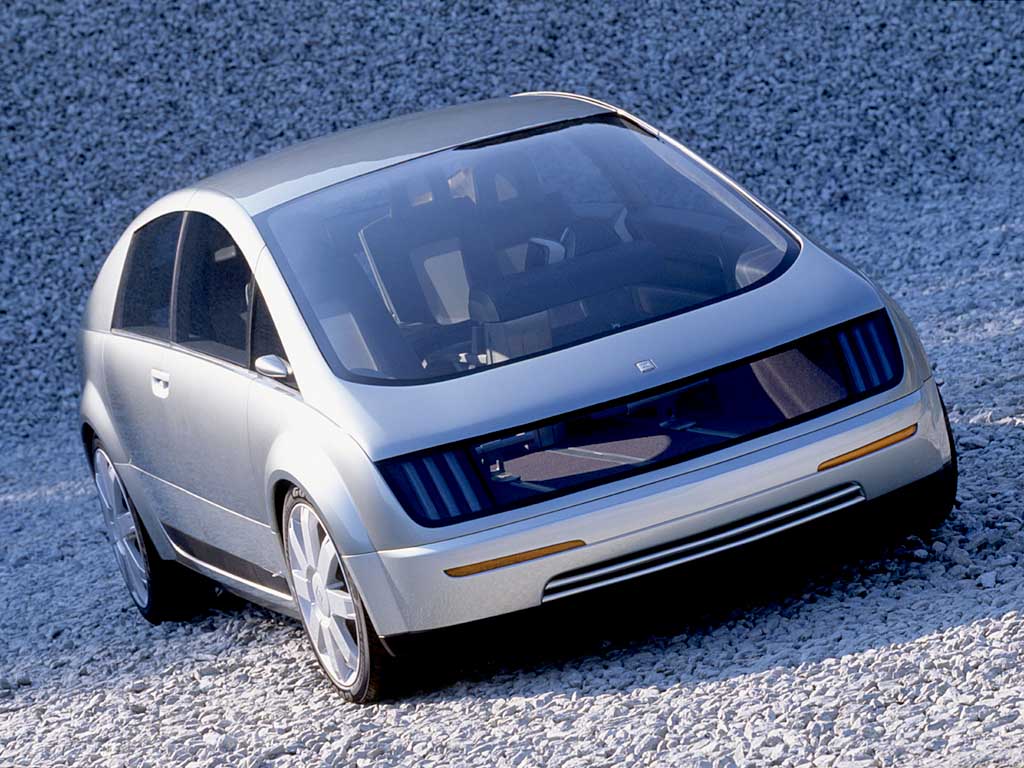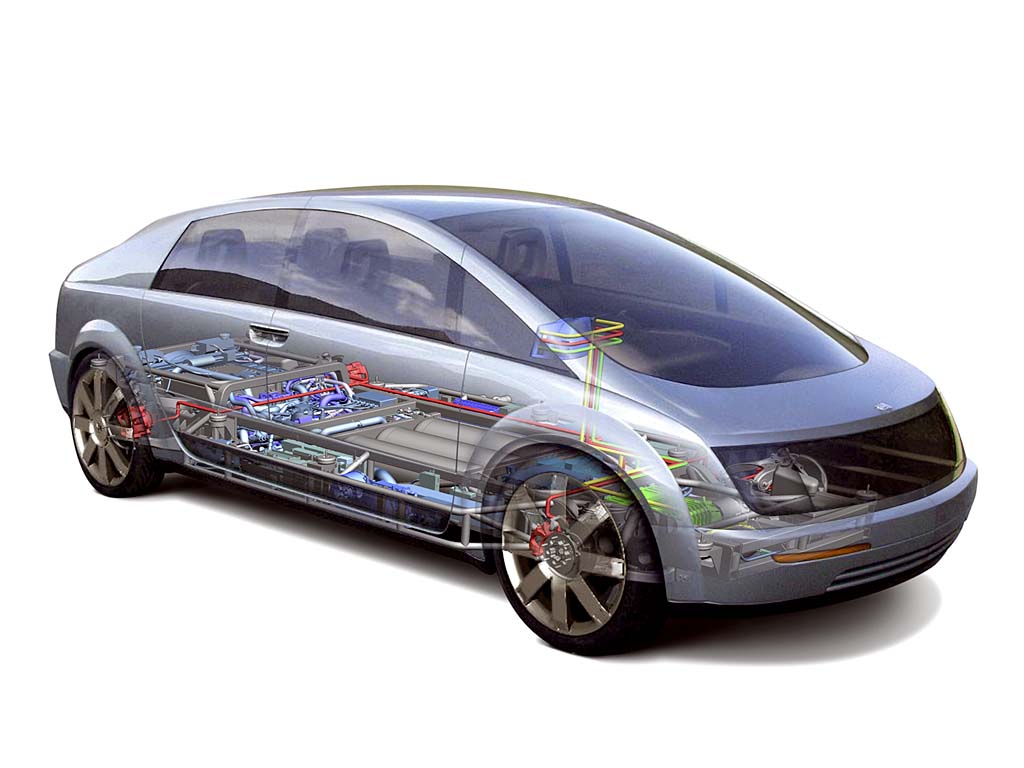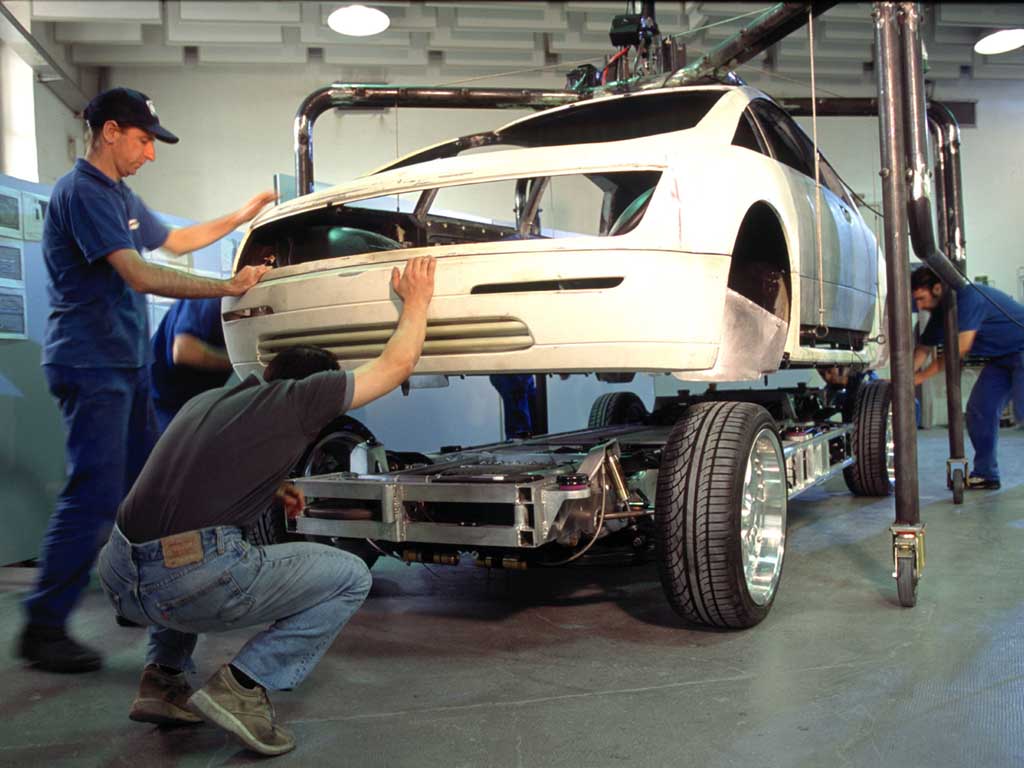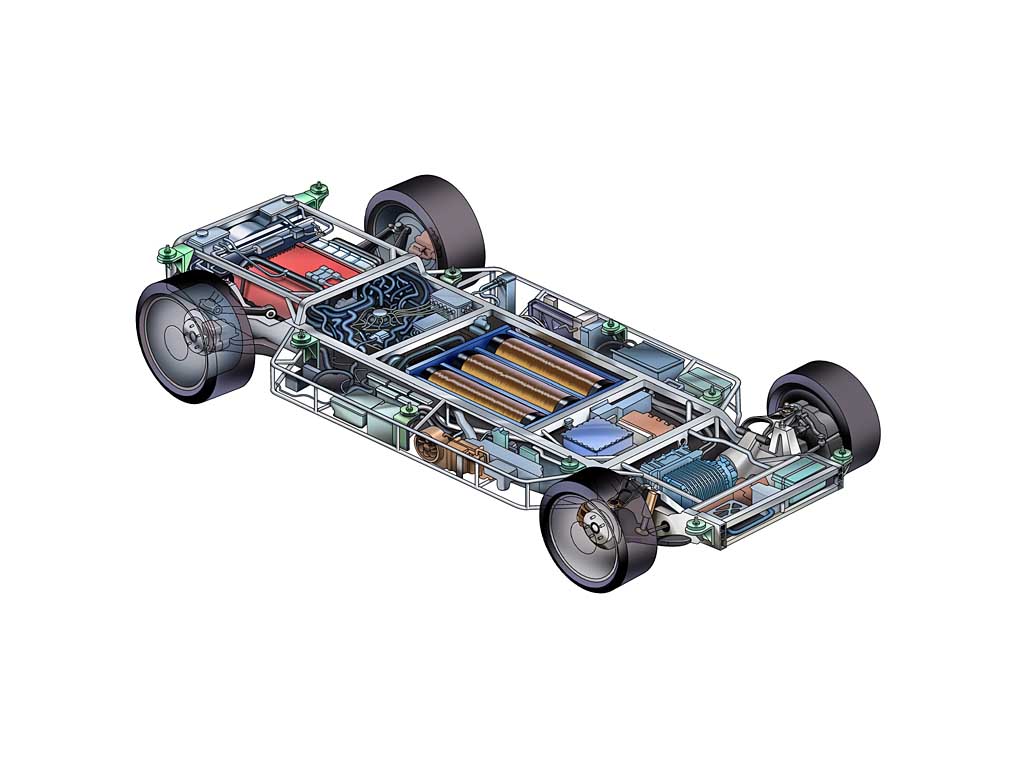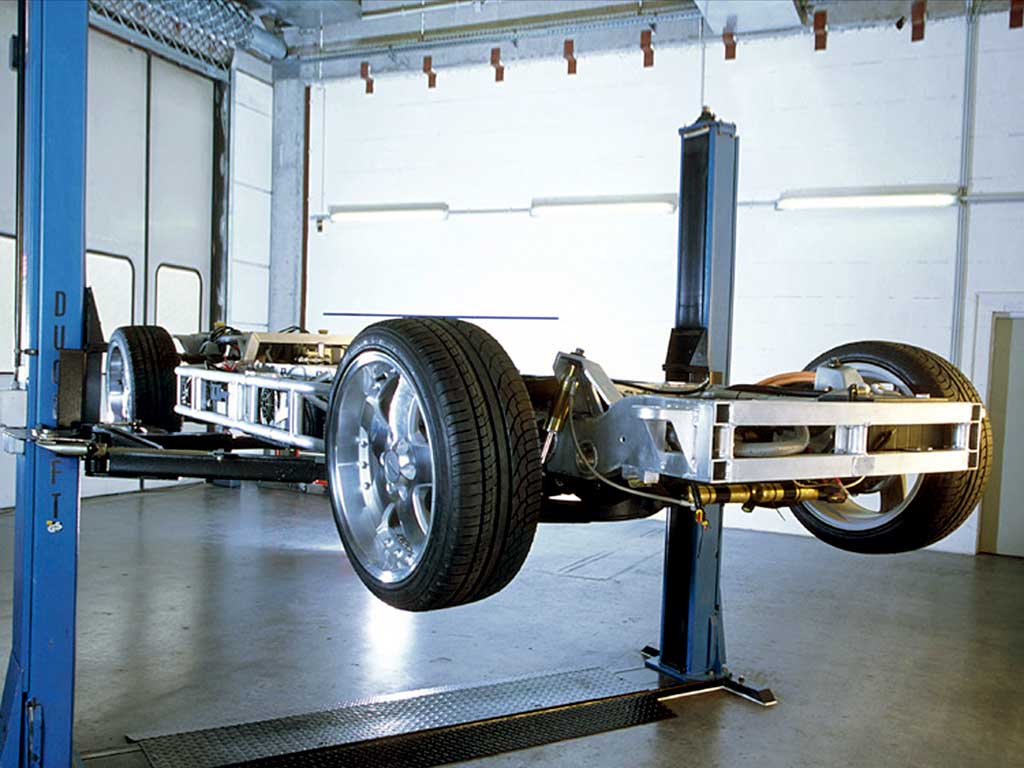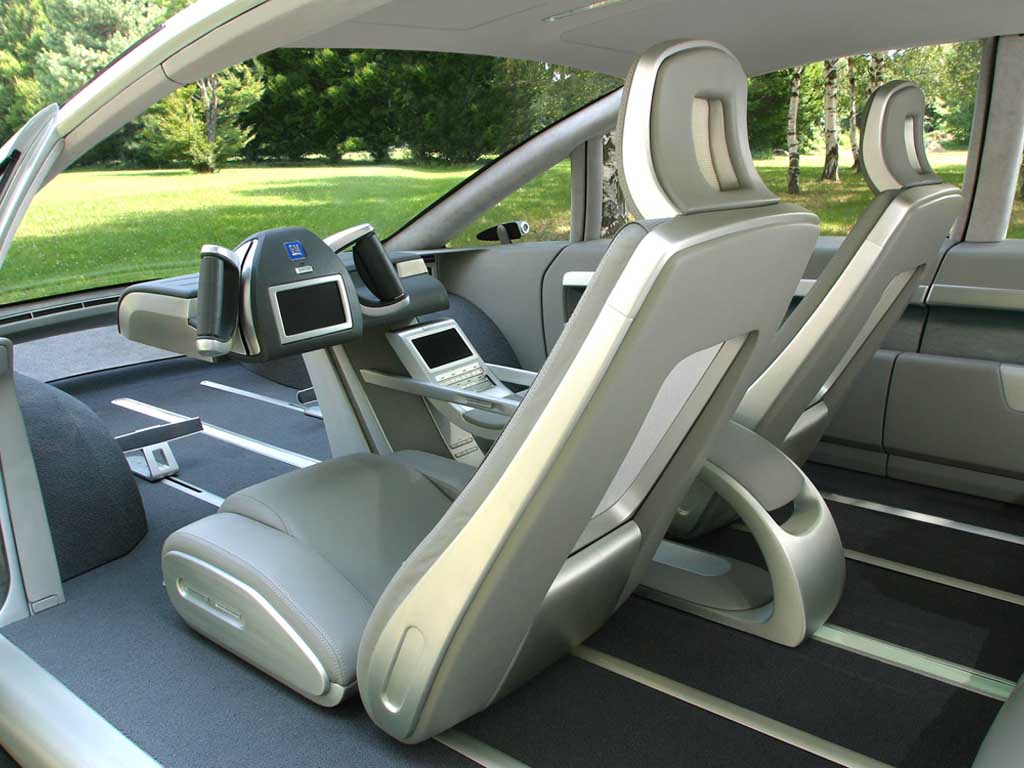2002 GM Hy-Wire Concept
With the Hy-Wire and future prototypes, GM hope to reinvent the automobile.
Hy-wire is a descendant of the GM Autonomy released at the 2002 North American International Autoshow. The Autonomy is a car which combines a hydrogen fuel cell with drive by wire technology. These technologies in combination allow all the mechanicals of the car to reside as a separate component to the body and passenger space.
The absence of a direct connection between the steering & pedals is possible with by-wire technology. Instead of mechanical connections to the chassis, the driver input is sent straight to a computer which then actuates the necessary component. With this setup, there are no restraints in when designing the interior space as connections from the controls to the chassis are not made.
A single docking port provides the electrical connection between the chassis and body. There are 10 pick-up points where the body mounts the chassis. Such few attachments provide maximum flexibility when designing a body.
The Hy-Wire is placed atop the same chassis as the one found on the Autonomy. With such a flexible chassis, GM was able to create the Hy-Wire in only eight months.
GM’s skateboard chassis contains its control and propulsion systems in an 11 inch ‘skateboard’. Having such a small chassis, allows GM to maximize interior space.
The body used in the Hy-Wire accentuates what is possible with GM’s skateboard chassis. The driver has an unobstructed view of the road ahead with no engine to see over. Essentially, the diver has an view from floor to ceiling.
Driving the skateboard chassis, is an electric engine. It is mounted transversly at the front of the chassis. Electric power is created by fuel cells at the rear of the car. These cells draw Hydrogen from tanks located securely in the center of the car. They convert the hydrogen to electricity, then send the power to the electric engine.
The hydrogen tanks themselves are made from composite materials. Three of these units are used in the chassis and have a total weight of 75 kilos (165 pounds). They store gaseous hydrogen at a pressure of 350 bars (5000 pounds per square inch).
The next development in hydrogen storage is an increase in unit capacity. GM and Quantum Fuel Systems Worldwide are preparing tanks that are safe up to 700 bar ( 10,000 pounds per square inch). Such storage would enable cars such as the Autonomoy and Hy-Wire to travel distances of 300 miles.
GM has taken bolds steps with its skateboard platform. Over 30 patents have been made which secure GMs intellectual property. Concept cars like the Hy-Wire offer real-world solutions to global pollution. Moreover, By-Wire technology allows designers greater freedom while sculpting the bodies and interiors of future cars. The Hy-Wire is one of the few prototypes made this decade that may revolutionize future car design.
In Detail
| engine | Three-Phase Electric |
| position | Front Transverse |
| power | 60 kw / 80.5 bhp @ 12000 rpm |
| bhp/weight | 42.41 bhp per tonne |
| torque | 215 nm / 158.6 ft lbs @ 12000 rpm |
| driven wheels | Steel & Fibreglass over Aluminum Skateboard |
| f brake size | mm / in |
| r brake size | mm / in |
| steering | Steer By-Wire |
| curb weight | 1898 kg / 4184 lbs |
| wheelbase | 3114 mm / 122.6 in |
| transmission | One Speed |
| gear ratios | 1.00:1, :1 |
| final drive | 8.67:1 |
| top speed | ~160.9 kph / 100.0 mph |





